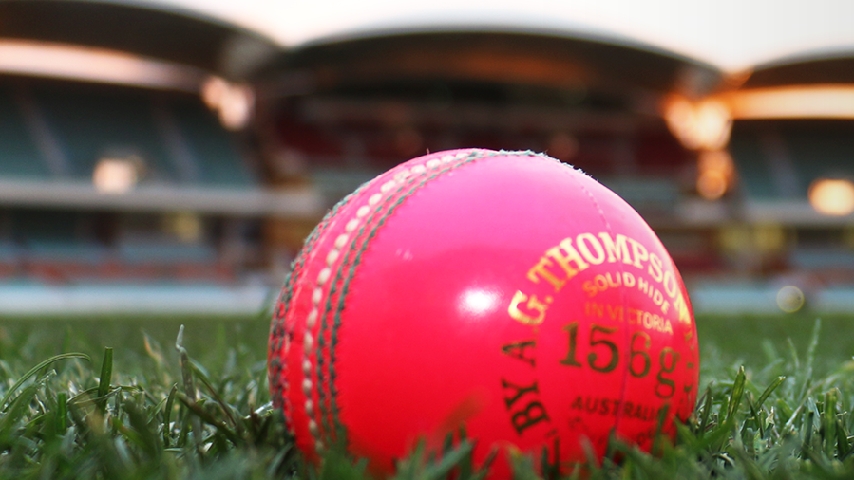- Tue, March 15, 2022

Loading

Loading

Australia Aims to Bounce Back in Adelaide
The second Test of the Border-Gavaskar Trophy between Australia and India promises to be a gripping contest at Adelaide Oval, starting December 6, 2024. Following their crushing 295-run defeat in Perth, Australia is eager to reassert their dominance in day-night Tests. Known for their stellar record with the pink ball, the hosts will rely on favorable conditions and strategic adjustments to level the series.
Australia’s decision to bring Scott Boland into the playing XI as a replacement for the injured Josh Hazlewood is one of the highlights leading up to the Test. Boland, who gained international fame during his Ashes debut in 2021, returns to the side with a clear role: to exploit the seam-friendly conditions of Adelaide. Captain Pat Cummins expressed confidence in Boland's ability to deliver long, impactful spells under lights, a task critical to Australia’s resurgence.
Mitchell Marsh’s Fitness Boosts Australia’s Prospects
All-rounder Mitchell Marsh, who experienced back soreness during the Perth Test, has been declared fit to bowl. His presence adds depth to Australia's lineup, offering a balance between bat and ball. Marsh's medium-pace bowling could prove pivotal in the twilight periods, traditionally challenging for batters.
Pat Cummins leads a strong bowling attack featuring Mitchell Starc and Nathan Lyon, both of whom have proven their mettle in pink-ball Tests. Lyon remains a crucial asset, given his success in day-night matches, particularly at Adelaide.
Rohit Sharma’s Return Adds Firepower to India
India welcomes back captain Rohit Sharma, who rejoins the team after missing the Perth Test due to personal reasons. Sharma’s inclusion brings both experience and tactical acumen. Uncharacteristically, Rohit will bat in the middle order, a decision aimed at maintaining the successful opening combination of KL Rahul and Yashasvi Jaiswal.
This dynamic opening pair contributed a commanding 201-run partnership in the second innings in Perth, setting the stage for India’s dominant victory. Their continued success will be critical for India in Adelaide, where batting under lights poses unique challenges.
Anticipation is high for the second #AUSvIND Test in Adelaide if these crowds at training are anything to go by! ????#RunwayReport | @Qantas pic.twitter.com/C8mAHPgby7
— cricket.com.au (@cricketcomau) December 5, 2024
Australia’s Impressive Pink-Ball Record
Australia’s dominance in day-night Tests is well-documented. With 11 wins out of 12 matches, including seven consecutive victories at Adelaide Oval, they boast an unparalleled record in the format. This psychological edge could prove significant as they seek to overcome the setback in Perth.
Key performers like Marnus Labuschagne, Steve Smith, and Mitchell Starc have excelled in pink-ball cricket. Labuschagne, in particular, leads the pink-ball Test run charts with 894 runs at an average of 63.85, underscoring his importance to Australia’s batting lineup.
India’s Adaptability Under Lights
India’s history with the pink ball has been a mix of highs and lows. While their first day-night Test in Adelaide in 2020 ended disastrously with a record-low total of 36, the team has since demonstrated resilience, winning three of their last four pink-ball Tests.
The return of Rohit Sharma, coupled with the stellar form of Virat Kohli and KL Rahul, bodes well for India. Kohli, who has five centuries at Adelaide Oval, remains a key player to watch, particularly given his ability to adapt to challenging conditions. The inclusion of Ravichandran Ashwin in the playing XI adds another layer to India’s strategy, providing them with a world-class spinner capable of exploiting Australian vulnerabilities.
Match Dynamics: Key Players and Strategies
Both teams bring their A-game to the Adelaide Oval, with pivotal players set to define the outcome.
Scott Boland’s return for Australia could be a game-changer. His ability to extract movement with the pink ball, especially under lights, makes him a significant threat to India’s batting lineup.
India, on the other hand, will rely on Jasprit Bumrah’s lethal pace and Mohammed Siraj’s consistency to counter Australia’s batting. The twilight sessions, where the ball tends to swing and seam more, will be critical for bowlers to capitalize on.
Mitchell Marsh’s dual role as an all-rounder adds versatility to Australia’s XI, while India’s decision to field Ravichandran Ashwin as their premier spinner emphasizes their intent to exploit spin-friendly conditions during the later stages of the Test.
The Legacy of Pink-Ball Tests
Adelaide Oval hosted the inaugural day-night Test in 2015, marking the beginning of a new era in cricket. Over the years, the format has evolved, with players adapting to the unique challenges posed by the pink ball. The extra lacquer on the ball and its behavior under lights continue to be defining factors, influencing team strategies and individual performances.
For Australia, the pink-ball Test remains a symbol of dominance, while for India, it represents a chance to overcome historical setbacks and assert their growing stature in world cricket.
A Battle for Supremacy
The second Test at Adelaide Oval holds immense significance for both teams. For Australia, it is an opportunity to reclaim their footing in the series and silence critics questioning their recent performances. For India, it is a chance to capitalize on their momentum and take a commanding 2-0 lead in the Border-Gavaskar Trophy.
As the world watches, the day-night spectacle at Adelaide promises high drama, intense rivalries, and moments that could shape the future of Test cricket.
Comments:
Leave a Reply